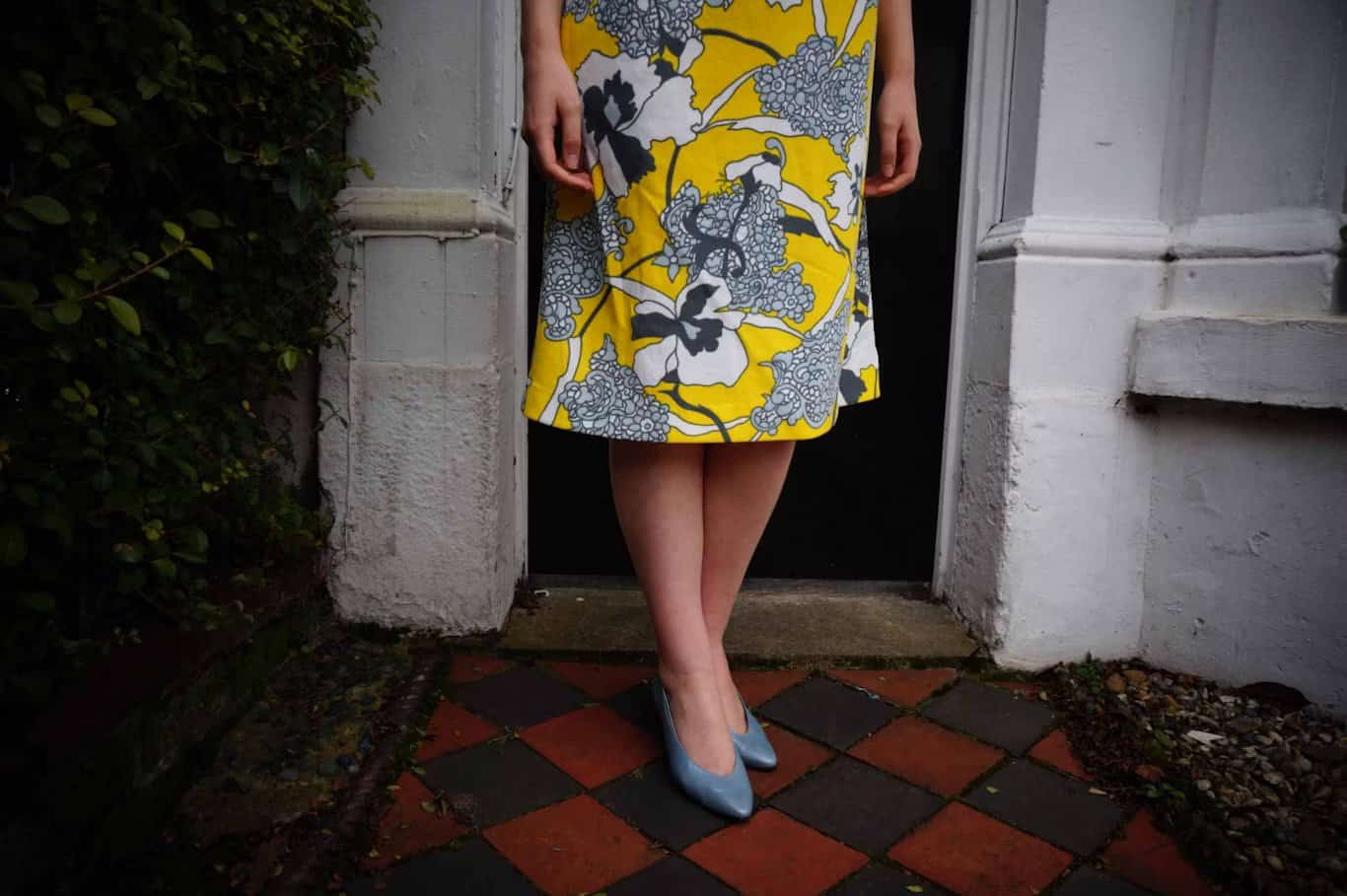Only 25% of our wardrobes gets recycled but buying vintage fashion has huge benefits – for the planet and your own wardrobe.
While some people are put off by buying second hand, part of the problem is not knowing what you’re looking for when it comes to vintage clothes.
Vintage blogger and buyer, Gold Thrift Vintage, shares her insider secrets to help you shop secondhand more successfully.
How To (Successfully) Shop For Vintage
Whether you’re a seasoned vintage shopper or new to thrifting and upcycling, shopping for vintage can often be hit and miss.
Get it right though and it’s a great way to shop ethically, say no to fast fashion and end up with a totally unique wardrobe.
1. Think practical not fancy dress
Chances are you might not be planning to shop for vintage when you do.
You might just stumble into a unknown vintage shop tucked away and you can’t resist taking a closer look.
So you search crammed rails until you pull out something that cuts a fine balance of hideous and amazing and you just have to have it.
But let’s get practical.
After you impulse buy those stacked glitter heels one size too small or a ‘60s maxi dress with bell sleeves and a high lace neck trim, neither of which you’ve never worn, slow down the splurge.
Think about the number of wears you’re going to get out of it.
Think carefully about what you have already.
If it’s a vintage dress, can you wear it everyday or is it just for a special occasion? Can you pair it with things you already own?

2. Check what you’re buying
It sounds simple but it’s amazing how common sense goes out the window when faced with a vintage bargain.
You may give it a quick once over for marks, but do you check the rest?
Find some natural light to see clearly.
Here’s your practical vintage shopping checklist:
- Check under the arms for marks.
- Look for small hidden holes and split seams – one of the weakest spot in a dress is the seam just below the zip.
- Test out zips and make sure all the buttons are there (little trick – sometimes there’s a spare button lurking on a garment label inside).
- Check hems around the bottom and that they are not frayed or coming undone.
5 Simple Ways To Make Your Clothes Last Longer
3. Don’t veer away from your style too much
If you’re new to wearing vintage and not too sure where to start try finding vintage alternatives for current trends that fit your personal style.
It doesn’t have to be full on retro.
You can find some really unique wardrobe staples with subtle differences to modern clothing that can be mixed into everyday outfits like a ‘70s or ‘80s shirt with a different cut or print or collar shape.
Buy a simple cotton summer dress, a classic leather purse or even a statement vintage necklace – start small and relish the difference.
“Don’t overlook the finishing touches, these are key for dating and recognising properly made vintage clothes”
4. How to spot quality vintage
Every vintage rummager wants to find a Chanel number from the ‘60s for under a tenner. It’s like the Holy Grail of vintage.
But do you know how to spot quality vintage clothes?
- Try looking out for natural fibres like cotton, silk and wool or a mix of them. These either suggest an older vintage garment or a well made piece.
- Don’t overlook the finishing touches, these are key for dating and recognising properly made vintage clothes.
- Seams that are bias bound rather than overlocked and higher quality or thicker lining material (and in darker shades) are both signs of something well made or designer vintage.
- As for the outside look for top stitching – a neat row of stitching sitting next to a seam.
- Some older cardigans have a strip of ribbon behind button holes to stop them stretching.
All of these things make clothes last longer (which means less fashion dumped into landfills – hurrah!).
5. Look at the label and zips
If you’re trying to date a piece of vintage clothing, look at the label if there is one.
The fonts used can give the game away.
See if it’s a woven label or just printed.
If you spy a silver metal zip it will be a ’50s or ’60s piece – later fashion moved to smaller plastic or coloured metal zips.
6. Does it actually fit?
Make sure it fits.
Never rely on sizes in labels.
Designer vintage clothing is at least a couple of sizes smaller than modern day sizing, even ‘80s clothes are at least a size smaller.
If it’s a good price, made to last and something you would wear, lots, it might be worth taking it to a tailor and having it altered professionally to fit.
If it’s too small, don’t buy it. It’s that simple.
7. Be proactive
Don’t just rely on stumbling to find your fantasy designer vintage dress.
Support vintage fairs and local traders who are often founts of vintage clothing knowledge and who are often in it just for the love of retro clothes.
While there are vintage fashion blogs and magazines, physical shopping can be better than shopping for vintage online as you can try things on and feel the textures of the clothes.
Don’t be afraid to ask for a discount if you’re buying more than one item.
Can’t get to a vintage fair or charity shop right now?
Check out our These Are The Best Ways To Buy Vintage Clothing Online










